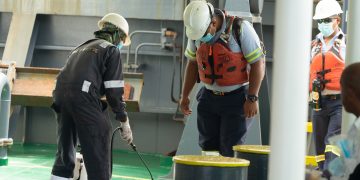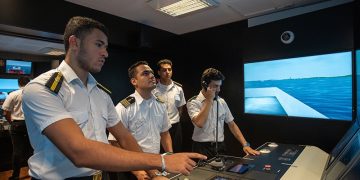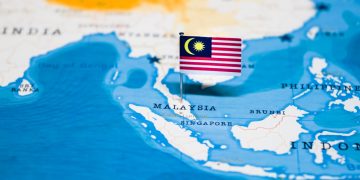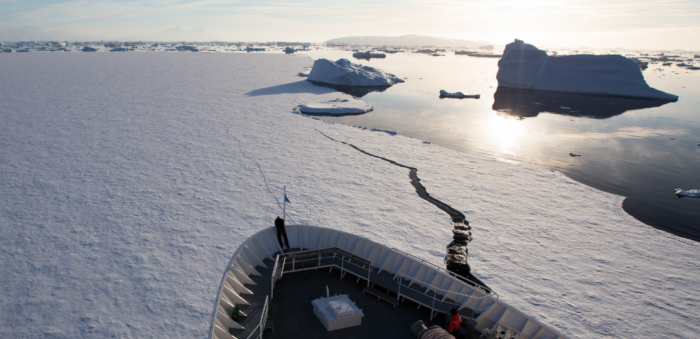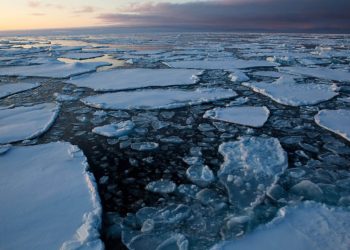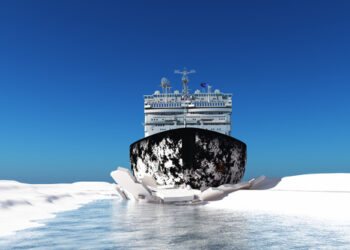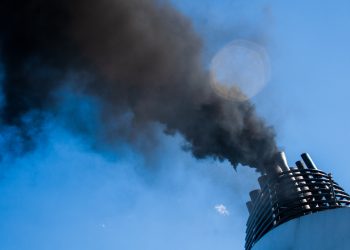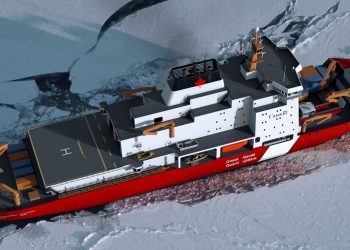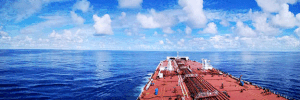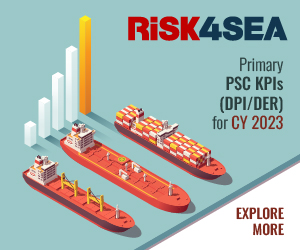As the ice melting is opening up new potentials for Arctic shipping but creates an uncertain future for this fragile environment, a new study published in Geophysical Research Letters suggests that this growth of trans-Arctic shipping and the subsequent increase in emissions may offset some of the overall warming trend in the Arctic by the end of the century.
Meanwhile, the study, written by UConn geographer Scott Stephenson and his colleagues, notes that this effect is relatively minor in the context of overall global warming, and that more ships in the Arctic would heighten the risk of environmental disasters, according to phys.org.
These findings were issued after the researchers modeled changes in climate trends associated with increases in shipping traffic and subsequent increases in emissions.
The results surprised us. We didn’t know if we would see a clear signal of warming or cooling, and the fact that we saw a clear cooling trend was unexpected,
…says Stephenson, an assistant professor of geography in the College of Liberal Arts and Sciences.
While shipping emissions can affect climate in two ways, through black carbon and sulphur dioxide release, Stephenson noted that the second one -sulfur emissions- play a role in cooling by encouraging the formation of cloud droplets and by scattering incoming sunlight.
Ship tracks form when very small, airborne particles emitted in the exhaust of large ships (and airplanes) attract water molecules, acting as ‘seeds’ (or ‘cloud condensation nuclei’) for clouds. Continued accumulation of droplets on the cloud condensation nuclei forms the thin, streaky clouds. “This is why you often see a trailing track of clouds following ships. They call those ship tracks,
…he explains.
Although the impacts of emissions have been investigated in the past, Stephenson says this study presents a more realistic and robust scenario, as it builds on the earlier studies and uses a fully coupled Earth system model, including projected emissions for future trans-Arctic shipping from 2006 to 2099, making it more dynamic.
The team also took into account the changing nature of sea ice through the seasons and how that would impact shipping routes. With shifts in shipping routes come shifts in where emissions would be deposited.
In addition, the researchers factored in global anthropogenic (human-caused) greenhouse gas concentration trajectories, adopted by the IPCC, at a level closely aligning with today’s trends, along with global economic output that will drive the transport of goods. The main result was that the cooling effect won out over the warming effect in the simulations, to the tune of about one degree Celsius.
However, Stephenson underlined that this relates to slowing global warming, but not halting the warming.
The mild cooling shown by these results is, we think, a significant piece in the puzzle of understanding the complexities of the interactions between humans and the climate system. It’s important to take account of this,
….he concluded.









